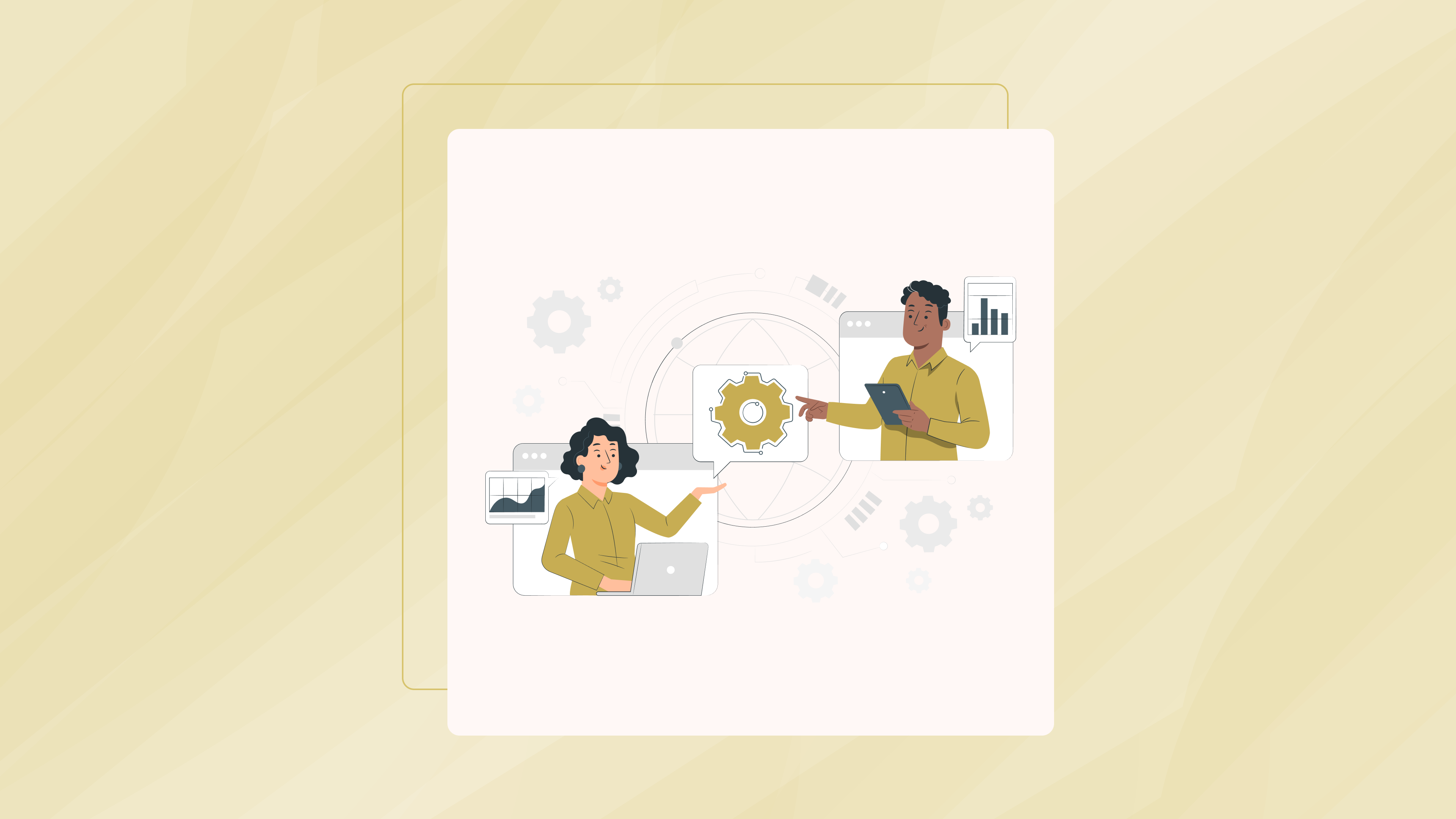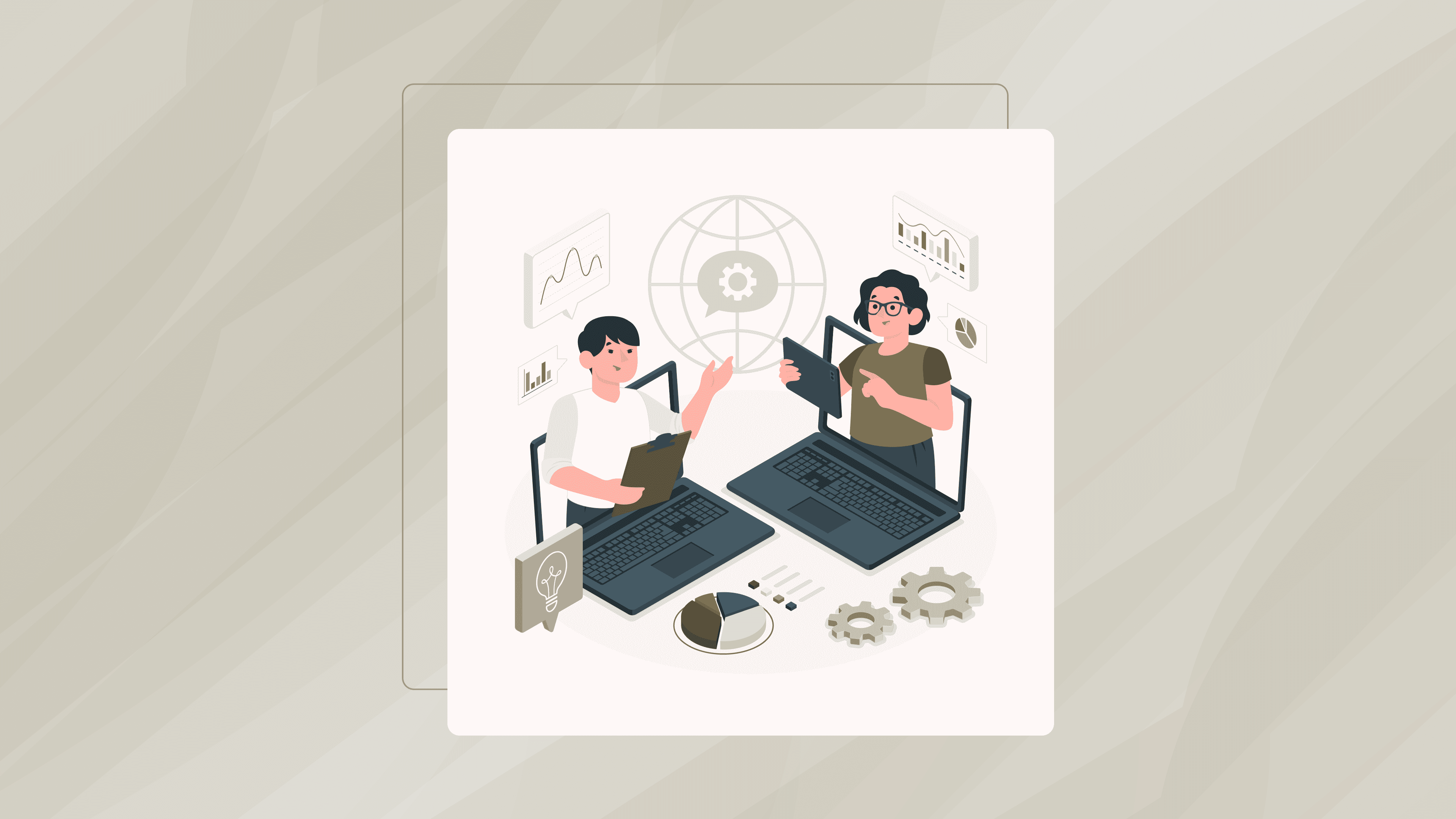Blockchain
What is Decentralization in Blockchain and How Does It Work?
Nov 15, 2024




Decentralization is one of the most fundamental principles of blockchain technology, shaping how data is stored, shared, and validated across a network. It eliminates the need for central authorities and empowers participants to manage and verify transactions collectively. But what exactly is decentralization, and how does it work within the blockchain ecosystem? This blog explores the concept of decentralization in blockchain, its mechanisms, advantages, and how it transforms traditional systems into more transparent, secure, and efficient models.
What is Decentralization in Blockchain?
Decentralization in blockchain refers to the distribution of authority, control, and decision-making across a network rather than relying on a single centralized entity. In a decentralized blockchain, no single organization, government, or individual has control over the entire system. Instead, the network’s participants (nodes) collectively validate and record transactions, ensuring transparency and security.
In simpler terms, decentralization removes the need for intermediaries, allowing peer-to-peer interactions while maintaining trust through consensus mechanisms and cryptographic security.
How Decentralization Works in Blockchain
Decentralization in blockchain is achieved through the following key mechanisms:
a. Distributed Ledger
Every participant (node) in the blockchain network maintains a copy of the ledger.
Transactions are recorded across all nodes, ensuring that the data is consistent and accessible.
b. Consensus Mechanisms
Decentralized blockchains rely on consensus mechanisms, such as Proof of Work (PoW), Proof of Stake (PoS), or Delegated Proof of Stake (DPoS), to validate transactions.
These mechanisms ensure that the majority of nodes agree on the validity of transactions before they are added to the blockchain.
c. Peer-to-Peer (P2P) Network
Blockchain networks operate on a peer-to-peer basis, where nodes communicate directly without relying on a central server.
This decentralized architecture ensures resilience and reduces the risk of single points of failure.
d. Cryptographic Security
Transactions and data are secured using advanced cryptographic techniques, ensuring the integrity and immutability of the blockchain.
Nodes can independently verify the authenticity of transactions.
Types of Blockchain Decentralization
Blockchain decentralization can take various forms depending on the use case and governance structure:
a. Fully Decentralized
In a fully decentralized system, all nodes have equal authority and participate in consensus.
Example: Bitcoin and Ethereum.
b. Partially Decentralized
A partially decentralized blockchain combines decentralization with some level of control by a specific group or consortium.
Example: Hyperledger Fabric, used for enterprise applications.
c. Federated/Consortium Blockchain
Operated by a group of organizations or entities with shared control over the network.
Example: R3 Corda, used in banking and financial industries.
4. Advantages of Decentralization
Decentralization in blockchain offers numerous benefits, transforming traditional systems into more secure, transparent, and inclusive networks:
a. Increased Security
Decentralized systems are harder to hack because there is no single point of failure.
Even if some nodes are compromised, the network remains operational.
b. Transparency
All transactions are recorded on a public ledger accessible to all participants, ensuring accountability and trust.
This transparency eliminates corruption and fraud.
c. Reduced Intermediaries
Decentralized systems remove the need for intermediaries like banks or clearinghouses, reducing costs and delays.
Peer-to-peer interactions simplify processes for users.
d. Resilience
Decentralized networks are highly resilient to failures.
If one or more nodes go offline, the network continues to function without disruption.
e. Empowerment
Participants have equal authority and control over their data and transactions, fostering inclusivity and democratization.
Challenges of Decentralization
While decentralization offers significant advantages, it is not without challenges:
Scalability: Decentralized networks, especially public blockchains, can struggle with scalability due to the time and computational power required for consensus.
Energy Consumption: Consensus mechanisms like Proof of Work consume large amounts of energy, raising environmental concerns.
Complexity: Decentralized systems can be complex to set up and maintain, requiring significant technical expertise.
Governance: Decentralized systems may face challenges in decision-making and coordination due to the lack of central authority.
Real-World Examples of Decentralization
Decentralization has enabled groundbreaking applications across various industries:
Bitcoin: A fully decentralized cryptocurrency that enables peer-to-peer transactions without a central bank.
Ethereum: A decentralized platform that supports smart contracts and decentralized applications (dApps).
Filecoin: A decentralized storage network that allows users to store and retrieve data securely.
DeFi (Decentralized Finance): Platforms like Uniswap and Aave provide decentralized financial services such as lending, borrowing, and trading without intermediaries.
The Future of Decentralization in Blockchain
The concept of decentralization continues to evolve, with advancements aiming to address its challenges and expand its potential applications:
Layer-2 Scaling Solutions: Technologies like rollups and sidechains aim to enhance scalability while maintaining decentralization.
Energy-Efficient Consensus Mechanisms: Transitioning to Proof of Stake and other less energy-intensive methods will reduce the environmental impact.
Decentralized Autonomous Organizations (DAOs): DAOs use decentralization to enable collective decision-making in a transparent and democratic manner.
Interoperability: Efforts to connect multiple decentralized networks will create unified ecosystems, broadening the scope of decentralization.
Conclusion
Decentralization in blockchain is a revolutionary concept that shifts control and trust from centralized entities to distributed networks. By eliminating intermediaries, enhancing security, and fostering transparency, decentralization has become the backbone of blockchain technology. Despite challenges like scalability and energy consumption, advancements in technology are paving the way for more efficient and inclusive decentralized systems. As blockchain adoption grows, decentralization will continue to play a pivotal role in shaping the future of finance, governance, and digital ecosystems, ensuring that trust and transparency remain at the forefront of innovation.
Decentralization is one of the most fundamental principles of blockchain technology, shaping how data is stored, shared, and validated across a network. It eliminates the need for central authorities and empowers participants to manage and verify transactions collectively. But what exactly is decentralization, and how does it work within the blockchain ecosystem? This blog explores the concept of decentralization in blockchain, its mechanisms, advantages, and how it transforms traditional systems into more transparent, secure, and efficient models.
What is Decentralization in Blockchain?
Decentralization in blockchain refers to the distribution of authority, control, and decision-making across a network rather than relying on a single centralized entity. In a decentralized blockchain, no single organization, government, or individual has control over the entire system. Instead, the network’s participants (nodes) collectively validate and record transactions, ensuring transparency and security.
In simpler terms, decentralization removes the need for intermediaries, allowing peer-to-peer interactions while maintaining trust through consensus mechanisms and cryptographic security.
How Decentralization Works in Blockchain
Decentralization in blockchain is achieved through the following key mechanisms:
a. Distributed Ledger
Every participant (node) in the blockchain network maintains a copy of the ledger.
Transactions are recorded across all nodes, ensuring that the data is consistent and accessible.
b. Consensus Mechanisms
Decentralized blockchains rely on consensus mechanisms, such as Proof of Work (PoW), Proof of Stake (PoS), or Delegated Proof of Stake (DPoS), to validate transactions.
These mechanisms ensure that the majority of nodes agree on the validity of transactions before they are added to the blockchain.
c. Peer-to-Peer (P2P) Network
Blockchain networks operate on a peer-to-peer basis, where nodes communicate directly without relying on a central server.
This decentralized architecture ensures resilience and reduces the risk of single points of failure.
d. Cryptographic Security
Transactions and data are secured using advanced cryptographic techniques, ensuring the integrity and immutability of the blockchain.
Nodes can independently verify the authenticity of transactions.
Types of Blockchain Decentralization
Blockchain decentralization can take various forms depending on the use case and governance structure:
a. Fully Decentralized
In a fully decentralized system, all nodes have equal authority and participate in consensus.
Example: Bitcoin and Ethereum.
b. Partially Decentralized
A partially decentralized blockchain combines decentralization with some level of control by a specific group or consortium.
Example: Hyperledger Fabric, used for enterprise applications.
c. Federated/Consortium Blockchain
Operated by a group of organizations or entities with shared control over the network.
Example: R3 Corda, used in banking and financial industries.
4. Advantages of Decentralization
Decentralization in blockchain offers numerous benefits, transforming traditional systems into more secure, transparent, and inclusive networks:
a. Increased Security
Decentralized systems are harder to hack because there is no single point of failure.
Even if some nodes are compromised, the network remains operational.
b. Transparency
All transactions are recorded on a public ledger accessible to all participants, ensuring accountability and trust.
This transparency eliminates corruption and fraud.
c. Reduced Intermediaries
Decentralized systems remove the need for intermediaries like banks or clearinghouses, reducing costs and delays.
Peer-to-peer interactions simplify processes for users.
d. Resilience
Decentralized networks are highly resilient to failures.
If one or more nodes go offline, the network continues to function without disruption.
e. Empowerment
Participants have equal authority and control over their data and transactions, fostering inclusivity and democratization.
Challenges of Decentralization
While decentralization offers significant advantages, it is not without challenges:
Scalability: Decentralized networks, especially public blockchains, can struggle with scalability due to the time and computational power required for consensus.
Energy Consumption: Consensus mechanisms like Proof of Work consume large amounts of energy, raising environmental concerns.
Complexity: Decentralized systems can be complex to set up and maintain, requiring significant technical expertise.
Governance: Decentralized systems may face challenges in decision-making and coordination due to the lack of central authority.
Real-World Examples of Decentralization
Decentralization has enabled groundbreaking applications across various industries:
Bitcoin: A fully decentralized cryptocurrency that enables peer-to-peer transactions without a central bank.
Ethereum: A decentralized platform that supports smart contracts and decentralized applications (dApps).
Filecoin: A decentralized storage network that allows users to store and retrieve data securely.
DeFi (Decentralized Finance): Platforms like Uniswap and Aave provide decentralized financial services such as lending, borrowing, and trading without intermediaries.
The Future of Decentralization in Blockchain
The concept of decentralization continues to evolve, with advancements aiming to address its challenges and expand its potential applications:
Layer-2 Scaling Solutions: Technologies like rollups and sidechains aim to enhance scalability while maintaining decentralization.
Energy-Efficient Consensus Mechanisms: Transitioning to Proof of Stake and other less energy-intensive methods will reduce the environmental impact.
Decentralized Autonomous Organizations (DAOs): DAOs use decentralization to enable collective decision-making in a transparent and democratic manner.
Interoperability: Efforts to connect multiple decentralized networks will create unified ecosystems, broadening the scope of decentralization.
Conclusion
Decentralization in blockchain is a revolutionary concept that shifts control and trust from centralized entities to distributed networks. By eliminating intermediaries, enhancing security, and fostering transparency, decentralization has become the backbone of blockchain technology. Despite challenges like scalability and energy consumption, advancements in technology are paving the way for more efficient and inclusive decentralized systems. As blockchain adoption grows, decentralization will continue to play a pivotal role in shaping the future of finance, governance, and digital ecosystems, ensuring that trust and transparency remain at the forefront of innovation.
Decentralization is one of the most fundamental principles of blockchain technology, shaping how data is stored, shared, and validated across a network. It eliminates the need for central authorities and empowers participants to manage and verify transactions collectively. But what exactly is decentralization, and how does it work within the blockchain ecosystem? This blog explores the concept of decentralization in blockchain, its mechanisms, advantages, and how it transforms traditional systems into more transparent, secure, and efficient models.
What is Decentralization in Blockchain?
Decentralization in blockchain refers to the distribution of authority, control, and decision-making across a network rather than relying on a single centralized entity. In a decentralized blockchain, no single organization, government, or individual has control over the entire system. Instead, the network’s participants (nodes) collectively validate and record transactions, ensuring transparency and security.
In simpler terms, decentralization removes the need for intermediaries, allowing peer-to-peer interactions while maintaining trust through consensus mechanisms and cryptographic security.
How Decentralization Works in Blockchain
Decentralization in blockchain is achieved through the following key mechanisms:
a. Distributed Ledger
Every participant (node) in the blockchain network maintains a copy of the ledger.
Transactions are recorded across all nodes, ensuring that the data is consistent and accessible.
b. Consensus Mechanisms
Decentralized blockchains rely on consensus mechanisms, such as Proof of Work (PoW), Proof of Stake (PoS), or Delegated Proof of Stake (DPoS), to validate transactions.
These mechanisms ensure that the majority of nodes agree on the validity of transactions before they are added to the blockchain.
c. Peer-to-Peer (P2P) Network
Blockchain networks operate on a peer-to-peer basis, where nodes communicate directly without relying on a central server.
This decentralized architecture ensures resilience and reduces the risk of single points of failure.
d. Cryptographic Security
Transactions and data are secured using advanced cryptographic techniques, ensuring the integrity and immutability of the blockchain.
Nodes can independently verify the authenticity of transactions.
Types of Blockchain Decentralization
Blockchain decentralization can take various forms depending on the use case and governance structure:
a. Fully Decentralized
In a fully decentralized system, all nodes have equal authority and participate in consensus.
Example: Bitcoin and Ethereum.
b. Partially Decentralized
A partially decentralized blockchain combines decentralization with some level of control by a specific group or consortium.
Example: Hyperledger Fabric, used for enterprise applications.
c. Federated/Consortium Blockchain
Operated by a group of organizations or entities with shared control over the network.
Example: R3 Corda, used in banking and financial industries.
4. Advantages of Decentralization
Decentralization in blockchain offers numerous benefits, transforming traditional systems into more secure, transparent, and inclusive networks:
a. Increased Security
Decentralized systems are harder to hack because there is no single point of failure.
Even if some nodes are compromised, the network remains operational.
b. Transparency
All transactions are recorded on a public ledger accessible to all participants, ensuring accountability and trust.
This transparency eliminates corruption and fraud.
c. Reduced Intermediaries
Decentralized systems remove the need for intermediaries like banks or clearinghouses, reducing costs and delays.
Peer-to-peer interactions simplify processes for users.
d. Resilience
Decentralized networks are highly resilient to failures.
If one or more nodes go offline, the network continues to function without disruption.
e. Empowerment
Participants have equal authority and control over their data and transactions, fostering inclusivity and democratization.
Challenges of Decentralization
While decentralization offers significant advantages, it is not without challenges:
Scalability: Decentralized networks, especially public blockchains, can struggle with scalability due to the time and computational power required for consensus.
Energy Consumption: Consensus mechanisms like Proof of Work consume large amounts of energy, raising environmental concerns.
Complexity: Decentralized systems can be complex to set up and maintain, requiring significant technical expertise.
Governance: Decentralized systems may face challenges in decision-making and coordination due to the lack of central authority.
Real-World Examples of Decentralization
Decentralization has enabled groundbreaking applications across various industries:
Bitcoin: A fully decentralized cryptocurrency that enables peer-to-peer transactions without a central bank.
Ethereum: A decentralized platform that supports smart contracts and decentralized applications (dApps).
Filecoin: A decentralized storage network that allows users to store and retrieve data securely.
DeFi (Decentralized Finance): Platforms like Uniswap and Aave provide decentralized financial services such as lending, borrowing, and trading without intermediaries.
The Future of Decentralization in Blockchain
The concept of decentralization continues to evolve, with advancements aiming to address its challenges and expand its potential applications:
Layer-2 Scaling Solutions: Technologies like rollups and sidechains aim to enhance scalability while maintaining decentralization.
Energy-Efficient Consensus Mechanisms: Transitioning to Proof of Stake and other less energy-intensive methods will reduce the environmental impact.
Decentralized Autonomous Organizations (DAOs): DAOs use decentralization to enable collective decision-making in a transparent and democratic manner.
Interoperability: Efforts to connect multiple decentralized networks will create unified ecosystems, broadening the scope of decentralization.
Conclusion
Decentralization in blockchain is a revolutionary concept that shifts control and trust from centralized entities to distributed networks. By eliminating intermediaries, enhancing security, and fostering transparency, decentralization has become the backbone of blockchain technology. Despite challenges like scalability and energy consumption, advancements in technology are paving the way for more efficient and inclusive decentralized systems. As blockchain adoption grows, decentralization will continue to play a pivotal role in shaping the future of finance, governance, and digital ecosystems, ensuring that trust and transparency remain at the forefront of innovation.
Schedule your Free Demo
Empower Your Organization’s Growth with the Future of Blockchain Technology
Book a Demo
Latest Blogs
Latest Blogs
Latest Blogs


How Is Blockchain Dominating The Education Sector?
Jan 18, 2025


what is immutable ledger in blockchain?
Jan 18, 2025


what makes blockchain technology secure?
Jan 18, 2025
